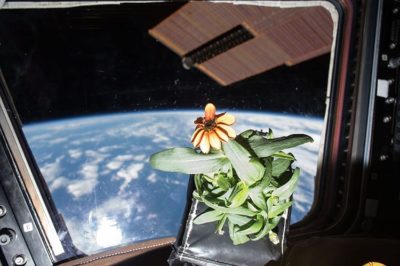HP Enterprise Creates History as Cloud Computing Experience Reaches Space
Share

The International Space Station. (NASA / Crew of STS-132)
Everyone is aware of a vast, limitless zone, several hundred kilometers outside the Earth’s atmosphere, where celestial objects orbit around giant stars and many unknown astronomical events take place. This boundless zone, known as space, is intriguing and there have been a host of government bodies and individual agencies that have spent billions in research and exploration of this area of nothingness. And to add to it all, there’s one major recent feat in the field of computing that a private info-tech company has achieved, which will change the way astronauts transmit their data back to the Earth. But before we get there, here are a few basics we must know of first.
What is the International Space Station?
In simple terms, the International Space Station (ISS) is a home away from home. It is a huge spacecraft orbiting the Earth, where astronauts live and carry out scientific researches for specific periods of time. Launched in the year 1998 by a Russian rocket, the International Space Station was built by a group of nations, where the first crew, comprising of astronauts from different countries of the world, arrived in the year 2000. Over a period of time, more nations added their own modules to the space station, finally making the ISS as big as an entire football field, as we know it today.
Weighing approximately half a million kilograms, the ISS is huge enough to accommodate six astronauts at a time, with all necessary living facilities, which also includes a gymnasium. With research labs from countries like Japan, USA, Russia as well as some European nations including Germany, France and The Netherlands; the ISS is where space research and exploration is carried out, which otherwise could not have been done on the Earth.
What is Cloud Computing?
We all know that a computer is a device that receives information, processes it; stores it and recalls it as and when instructions are fed into it. A remote server is a computing term, which is a device that is not attached to the client’s keyboard but it can be accessed from any part of the world from anywhere over a shared network. And cloud computing is a term, which means the delivery of a host of Internet services like databases, applications, networking, analytics and storage to a client on demand in any part of the world. In short, cloud computing means a shared pool of computer resources and services, which can be accessed remotely over the Internet by a lot of clients.
Cloud Computing and International Space Station
In the year 2017, when a space cargo capsule called SpaceX Dragon was sent into orbit to deliver cargo to the astronauts at ISS, little did the space researchers know that they were in for a pleasant surprise. Developed by tech giant Hewlett Packard Enterprise (HPE), a supercomputer known as Spaceborne Computer was delivered to the International Space Station after it was thoroughly tested for over a year to check if it would sustain in outer space. The supercomputer (a network of computers working together) was examined to see if it could withstand the harsh space atmospheres, radiation flares, frequent power outages, zero gravity and vacuum; and only then it was delivered to its destination aboard the ISS in August.
Basically, the idea behind delivering this supercomputer to the ISS was to cut down on time that the astronauts required to send research data to and fro from space. HP Enterprise developed cloud computing techniques in Spaceborne Computer and made it easier for the experimenters in orbit to store their own data and use it when necessary. Till now, astronauts transmitted data back to the Earth first to get it checked, while waiting for results to come back. Now, researchers can directly run their analyses in space instead of sending it back for insight. And so, with the help of cloud computing, communication between Earth and space can become a lot quicker, more real-time and much more efficient.
How cloud computing could ease challenges at the ISS
The connection and bandwidth between space and Earth is slow and intermittent and there could be problems regarding communication for a few minutes. With cloud computing, the unreliability can be done away with and there can be no chances of data loss, while it is being sent back to the Earth, as opposed to before. Testing supercomputers in space can make way for more research studies on an advanced level in the future, where astronauts are eyeing other planets for habitation such as Mars. The Spaceborne Computer will also help scientists to carry out their research work without making use of bulky, overly expensive and time-consuming computing devices.
As the one-of-a-kind, first-ever cloud experience, which is set to make communication between Earth and space easier, makes its way into the International Space Station; it gives us one more reason to rejoice, as mankind takes another giant leap in the field of space communication.
Enjoyed this article? Also, check out “NASA’s Deep Space Network: How We Communicate with Space Probes Billions of Miles from Earth“.
Fact Analysis:
STSTW Media strives to deliver accurate information through careful research. However, things can go wrong. If you find the above article inaccurate or biased, please let us know at [email protected]













